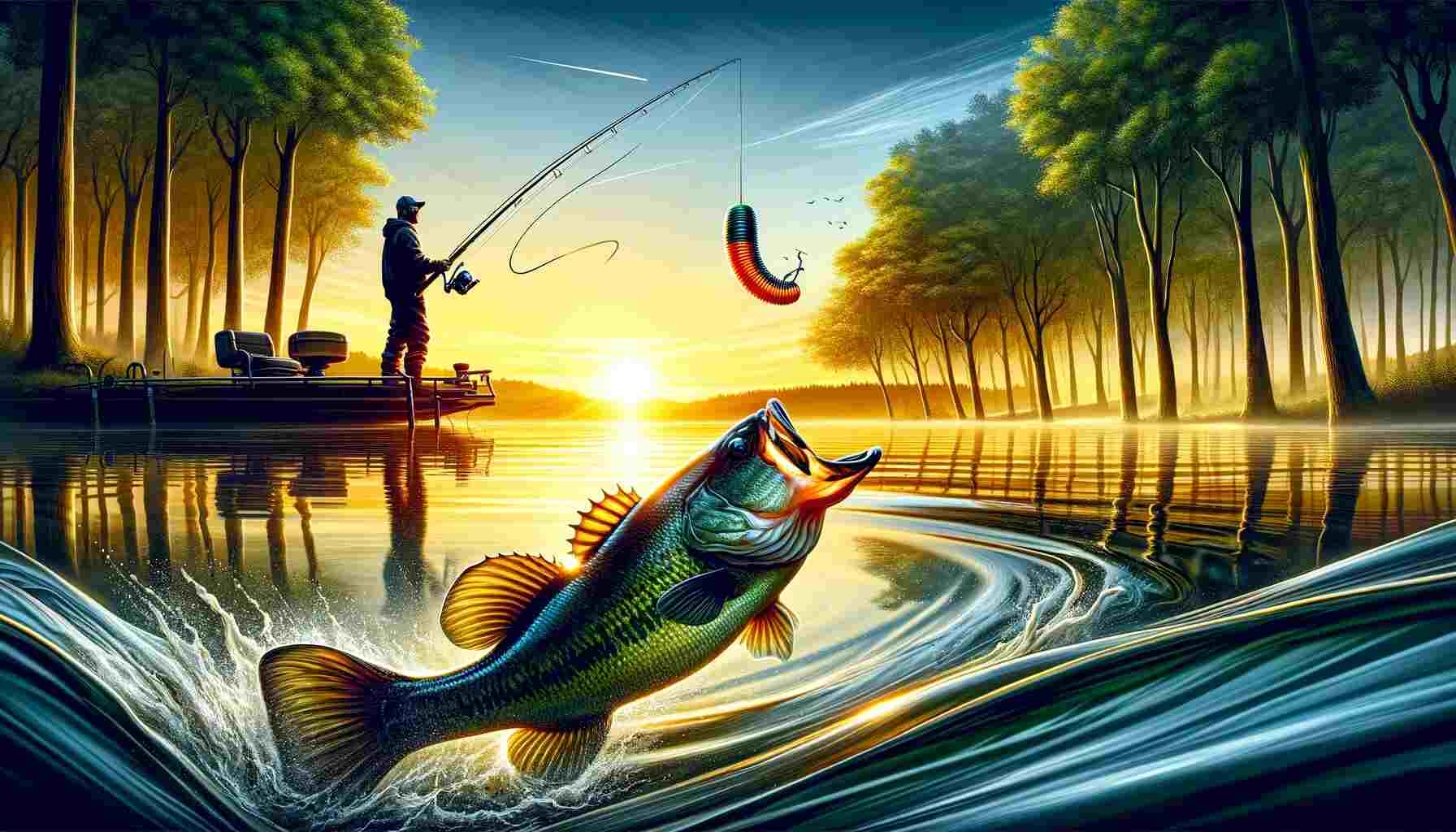This comprehensive guide explores the best baits for catching bass, informed by expert insights, scientific studies, and practical tips. Whether you’re fishing for largemouth, smallmouth, or spotted bass, this article will help you understand what baits work best and why.
Understanding Bass Behavior
To select the best bait for bass fishing, it’s crucial to understand bass behavior. Bass are predatory fish, and their feeding habits are influenced by several factors, including water temperature, time of year, weather conditions, and the availability of prey. Bass are most active during early morning and late afternoon, and they tend to stay close to structures like rocks, weeds, and submerged logs where they can ambush their prey.
Types of Bass
- Largemouth Bass: Known for their large mouths and preference for warmer waters, largemouth bass are often found in lakes, ponds, and slow-moving rivers.
- Smallmouth Bass: Preferring cooler, clearer waters, smallmouth bass are typically found in rivers and rocky lakes.
- Spotted Bass: Similar to largemouth bass but smaller in size, spotted bass are found in both rivers and reservoirs.
Top Baits for Bass Fishing
1. Plastic Worms
Why They Work: Plastic worms are versatile and can be used in various water conditions and fishing styles. Their lifelike movement attracts bass, and they can be rigged in multiple ways, including Texas rig, Carolina rig, and wacky rig.
Best Conditions: Plastic worms are effective year-round but are particularly useful in warmer water temperatures when bass are more active.
Recommended Brands:
2. Crankbaits
Why They Work: Crankbaits mimic the appearance and movement of small fish, making them irresistible to bass. They come in various depths, allowing anglers to target different parts of the water column.
Best Conditions: Crankbaits are highly effective in colder waters and during the pre-spawn and post-spawn periods.
Recommended Brands:
3. Spinnerbaits
Why They Work: The combination of flash and vibration from spinnerbaits mimics the movement of fleeing baitfish, triggering bass to strike. They are particularly effective in murky waters.
Best Conditions: Spinnerbaits are great for fishing around structures like weeds and submerged logs, where visibility is low.
Recommended Brands:
4. Jigs
Why They Work: Jigs are highly effective for bass due to their versatility and ability to be fished in various conditions. They can be tipped with trailers like crawfish or minnows to enhance their appeal.
Best Conditions: Jigs are particularly useful in colder water and during the spawning season when bass are nesting.
Recommended Brands:
5. Topwater Baits
Why They Work: Topwater baits create surface commotion that attracts bass to strike. The visual excitement of seeing a bass hit a topwater bait is unmatched.
Best Conditions: Topwater baits are most effective during early morning and late evening in warm water conditions.
Recommended Brands:
Seasonal Guide to Bass Fishing
- Spring: As water temperatures rise, bass become more active and start moving to shallower waters for spawning. Crankbaits, plastic worms, and jigs are effective during this time.
- Summer: Bass tend to stay in deeper waters to avoid the heat. Drop shot rigs, deep-diving crankbaits, and plastic worms work well in summer.
- Fall: Bass feed heavily in preparation for winter, making it an excellent time for spinnerbaits, crankbaits, and jigs.
- Winter: Bass are less active in cold water, so slow-moving baits like jigs and plastic worms are most effective.
Expert Tips for Bass Fishing
- Match the Hatch: Pay attention to the local forage and select baits that mimic the size and color of the natural prey.
- Vary Retrieval Speeds: Experiment with different retrieval speeds and patterns to trigger strikes.
- Use the Right Gear: Ensure your rod, reel, and line are suited for the type of bait and fishing conditions.
- Fish the Structures: Target areas with structures like weed beds, rocks, and submerged logs where bass are likely to hide.
- Stay Stealthy: Bass are sensitive to noise and movement, so approach fishing spots quietly and minimize disturbances.
Scientific Insights
According to a study published in the North American Journal of Fisheries Management, the feeding behavior of bass is significantly influenced by prey availability and environmental conditions. The study found that bass prefer larger prey items in warmer months and are more opportunistic feeders in colder months . Another study highlighted that the coloration and movement patterns of artificial baits play a crucial role in attracting bass, with natural colors and erratic movements being most effective .
Buyer’s Guide
When purchasing bass fishing baits, consider the following factors:
- Water Clarity: For clear waters, use natural-colored baits. For murky waters, opt for bright or dark colors.
- Depth: Choose baits that can be fished at the desired depth. Crankbaits and jigs work well for deeper waters, while topwater baits are for surface fishing.
- Versatility: Select baits that can be used in various conditions to maximize their utility.
- Durability: Ensure the baits are made from high-quality materials that can withstand multiple strikes and rough conditions.
Conclusion
Selecting the best bait for catching bass involves understanding bass behavior, seasonal patterns, and environmental conditions. Plastic worms, crankbaits, spinnerbaits, jigs, and topwater baits are all excellent choices, each with its unique advantages. By matching the bait to the conditions and following expert tips, you can increase your chances of landing that prized bass.
Happy fishing!








